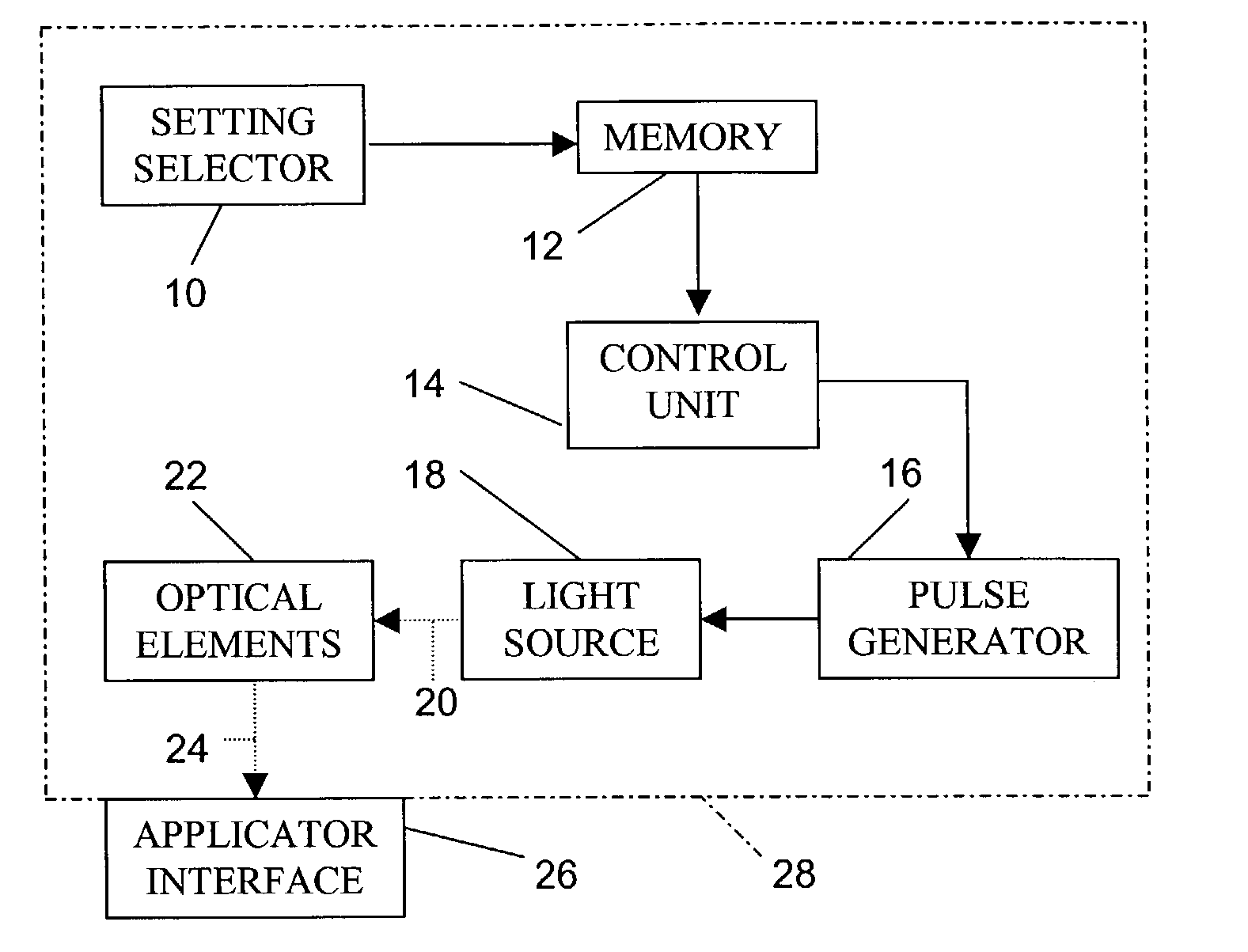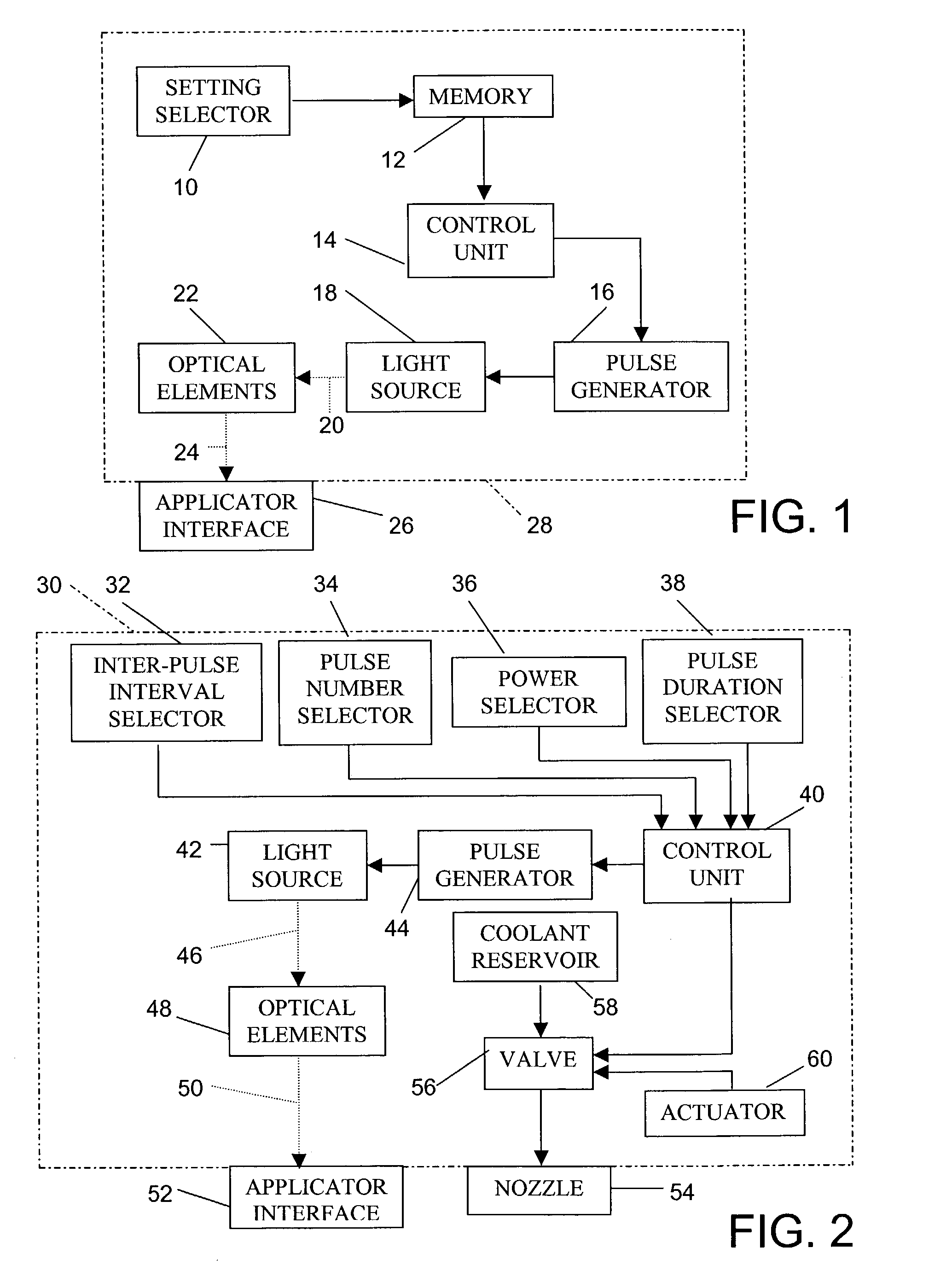Hair treatment method
a hair treatment and hair technology, applied in the field of hair treatment methods, can solve the problems of consuming public with few options in removing undesired hair, methods carrying a certain amount of risk of skin damage, and shortwavelengths less than 550 nm are not useful, so as to avoid skin damage, safe for home use, and energy consumption sufficient
- Summary
- Abstract
- Description
- Claims
- Application Information
AI Technical Summary
Benefits of technology
Problems solved by technology
Method used
Image
Examples
Embodiment Construction
. In a preferred setting or combination of operational parameters suitable for home use, an incoherent light applicator device for temporary hair removal generates pulses with a pulse number of two, a pulse duration of 7 msec, an inter-pulse interval of 300 msec, a total pulse energy of 20 J / cm.sup.2, and a spectral distribution of a commercially available flashlamp, including wavelengths between 500 and 1200 nm.
[0064] Home Use Example 2. A slightly higher setting or combination of operational parameters for an incoherent light applicator device suitable for home use involves a pulse sequence with a pulse number of two, a pulse duration of 7 msec, an inter-pulse interval of 250 msec, a total pulse energy of 20 j / cm.sup.2, and a spectral distribution of a commercially available flashlamp, including wavelengths between 500 and 1200 nm. Although the total amount of energy is the same as in the first example, the shorter interpulse interval means that the rate of energy transmission to ...
PUM
 Login to View More
Login to View More Abstract
Description
Claims
Application Information
 Login to View More
Login to View More - R&D
- Intellectual Property
- Life Sciences
- Materials
- Tech Scout
- Unparalleled Data Quality
- Higher Quality Content
- 60% Fewer Hallucinations
Browse by: Latest US Patents, China's latest patents, Technical Efficacy Thesaurus, Application Domain, Technology Topic, Popular Technical Reports.
© 2025 PatSnap. All rights reserved.Legal|Privacy policy|Modern Slavery Act Transparency Statement|Sitemap|About US| Contact US: help@patsnap.com


